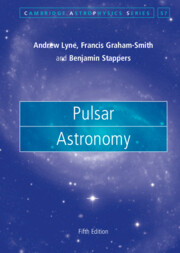Book contents
- Frontmatter
- Contents
- Preface
- Part I Discoveries and Techniques
- 1 The Discoveries
- 2 Telescope Techniques, Radio to TeV
- 3 Receiver Techniques and Data Analysis
- 4 Surveys and Population
- 5 Pulsar Timing
- 6 Timing and Astrometry of Binary Pulsars
- 7 The Distances of the Pulsars
- Part II Observed Physical Characteristics
- Part III Neutron Star Physics
- Part IV Environments and the Interstellar Medium
- References
- Index
7 - The Distances of the Pulsars
from Part I - Discoveries and Techniques
Published online by Cambridge University Press: 21 July 2022
- Frontmatter
- Contents
- Preface
- Part I Discoveries and Techniques
- 1 The Discoveries
- 2 Telescope Techniques, Radio to TeV
- 3 Receiver Techniques and Data Analysis
- 4 Surveys and Population
- 5 Pulsar Timing
- 6 Timing and Astrometry of Binary Pulsars
- 7 The Distances of the Pulsars
- Part II Observed Physical Characteristics
- Part III Neutron Star Physics
- Part IV Environments and the Interstellar Medium
- References
- Index
Summary
Pulsar distances are obtained from their frequency dispersion, geometrically from annual parallax, and from optical identifiction with supernova remnants, globular clusters and binary companions. For most pulsars, distances are only available from observation of effects of propagation in the interstellar medium, particularly neutral hydrogen absorption and frequency dispersion. Interpretation of the dispersion measure requires a model of the electron distribution through the Galaxy.
Keywords
- Type
- Chapter
- Information
- Pulsar Astronomy , pp. 105 - 118Publisher: Cambridge University PressPrint publication year: 2022

